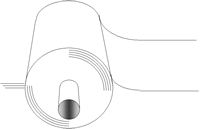 1. Steel strip arrives at the can manufacturing plant in large coils.
1. Steel strip arrives at the can manufacturing plant in large coils.
金屬板材以大卷的形式運(yùn)到制罐廠
 2. Steel strip is cut into large sheets
2. Steel strip is cut into large sheets
卷材被切成大的片材
 3. Lacquer is applied to the side of the sheets that will become the internal surfaces of the finished cans. This special lacquer is to protect the can itself from corrosion and from any possibility of interaction between the contents and the metal.
3. Lacquer is applied to the side of the sheets that will become the internal surfaces of the finished cans. This special lacquer is to protect the can itself from corrosion and from any possibility of interaction between the contents and the metal.
在將成為罐體內(nèi)表面的一面涂漆,,涂漆是為了防止金屬本身銹蝕或與內(nèi)容物發(fā)生反應(yīng)
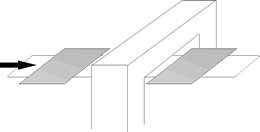 4. The lacquered sheets are dried in an oven.
4. The lacquered sheets are dried in an oven.
漆膜經(jīng)過(guò)烘道干燥
 5. The large sheets are slit into small sheets, one for each can body.
5. The large sheets are slit into small sheets, one for each can body.
片材被分成小塊,,每一小塊做一個(gè)罐身
 6. Each small sheet is rolled into a cylinder.
6. Each small sheet is rolled into a cylinder.
每個(gè)小片被卷成一個(gè)圓筒
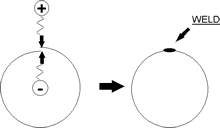 7. The cylinder edges are welded by squeezing them together whilst passing an electric current through them. This heats up the metal sufficiently for a sound joint to be made.
7. The cylinder edges are welded by squeezing them together whilst passing an electric current through them. This heats up the metal sufficiently for a sound joint to be made.
卷筒的二邊擠壓在一起通過(guò)電流,,這會(huì)加熱金屬表面并把二邊金屬牢牢地焊接在一起
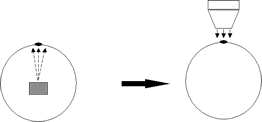 8. The inside surface of the weld is sprayed with lacquer and then cured by blowing heated air on to the outside of the cans.
8. The inside surface of the weld is sprayed with lacquer and then cured by blowing heated air on to the outside of the cans.
罐內(nèi)壁進(jìn)行噴涂并在罐外吹熱風(fēng)使之干燥
 9. The cans are passed through a flanger where the top and bottom of the can are flanged outwards to accept the ends.
9. The cans are passed through a flanger where the top and bottom of the can are flanged outwards to accept the ends.
罐身通過(guò)一個(gè)刮板使罐頂和底部形成折邊以便與罐底結(jié)合
 10. Plain ends are seamed to the can bodies to close one end of every can.
10. Plain ends are seamed to the can bodies to close one end of every can.
每個(gè)罐身都與一個(gè)罐底卷合
 11. The cans are passed through a beader where the walls of the cans have circumferential beads formed in them to give added strength.
11. The cans are passed through a beader where the walls of the cans have circumferential beads formed in them to give added strength.
罐子通過(guò)一個(gè)滾邊機(jī)給罐身滾筋以增加罐身強(qiáng)度
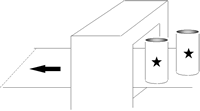 12. Every can is tested at each stage of manufacture.
12. Every can is tested at each stage of manufacture.
At the final stage they pass through a pressure tester, which automatically rejects any cans with pinholes or fractures
每個(gè)生產(chǎn)環(huán)節(jié)都對(duì)罐子進(jìn)行檢測(cè),。最后罐子通過(guò)一個(gè)壓力檢測(cè)機(jī),,并自動(dòng)剔除有針孔或爆裂的罐子
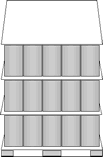 13. The finished can bodies are then transferred to the warehouse to be automatically palletised before despatch to the filling plant.
13. The finished can bodies are then transferred to the warehouse to be automatically palletised before despatch to the filling plant.
成品罐體運(yùn)往倉(cāng)庫(kù)并自動(dòng)碼垛等待運(yùn)往灌裝廠




